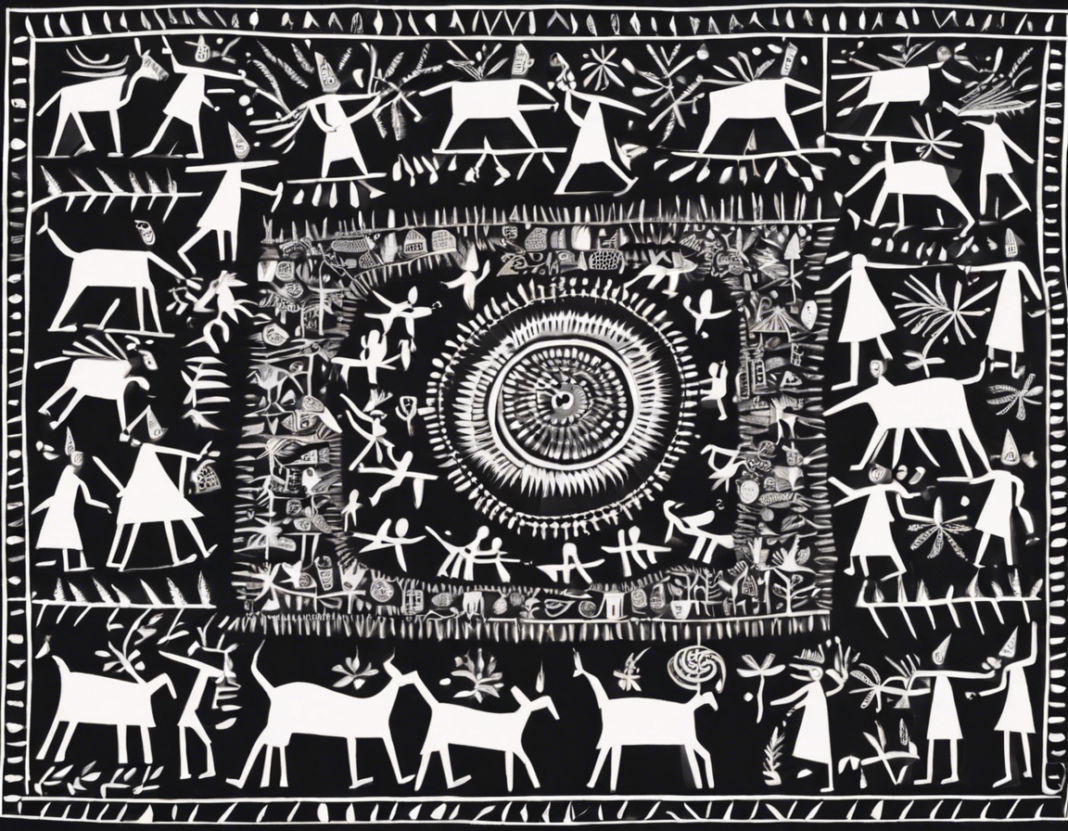Warli art is a beautiful and intricate art form that originates from the Warli tribe in Maharashtra, India. This traditional art has been practiced for centuries and continues to captivate art lovers around the world with its simplistic yet profound beauty. In this blog post, we will delve into the history, techniques, motifs, and significance of Warli art, as well as how it has evolved over time.
History of Warli Art
Warli art dates back to as early as the 10th century and is believed to have originated in the Maharashtrian region of India. The art form gets its name from the Warli tribe, who are the indigenous people of the region. Historically, Warli art was created by the women of the tribe on the walls of their homes as a form of decorative expression. The art was primarily done in white pigment on a mud or cow dung base, using bamboo sticks as brushes.
Techniques of Warli Art
Materials: Traditionally, Warli art is done using natural materials such as rice paste, bamboo sticks, and mud walls. However, modern artists also use acrylic paints on paper and canvas to create Warli art.
Style: Warli art is characterized by its simplistic style, with the extensive use of geometric shapes such as circles, triangles, and lines to depict everyday life scenes. The art is usually monochromatic, with white as the primary color against a brown or ochre background.
Motifs in Warli Art
Warli art is known for its depiction of daily life activities, rituals, and celebrations of the Warli tribe. Some common motifs found in Warli art include:
-
Human Figures: The human form in Warli art is represented by two triangular shapes joined at the tip to depict the head and body, with stick-like arms and legs.
-
Animals: Animals such as birds, cows, and horses are commonly found in Warli art, symbolizing the close relationship between humans and nature.
-
Trees and Plants: Trees, plants, and nature motifs are also prevalent in Warli art, reflecting the tribal community’s deep connection to the environment.
-
Circle of Life: Circles are a recurring motif in Warli art, symbolizing the cycle of life, unity, and harmony within the tribal community.
Significance of Warli Art
Warli art holds deep cultural and spiritual significance for the Warli tribe. It is not merely a form of decoration but serves as a means of passing down tribal folklore, traditions, and customs from one generation to the next. The art form also reflects the tribe’s worldview, which emphasizes the interconnectedness of all living beings and the importance of living in harmony with nature.
Evolution of Warli Art
While Warli art has its roots in traditional practices, it has evolved over time to reach a wider audience and gain recognition on a global scale. Contemporary artists have adapted the traditional techniques and motifs of Warli art to create a fusion of modern and traditional styles. Today, Warli art can be found on various surfaces such as canvas, paper, fabric, and even on products like clothing, accessories, and home decor items.
Frequently Asked Questions (FAQs)
1. What is the significance of the circle in Warli art?
In Warli art, the circle represents the cycle of life, unity, and harmony within the tribal community. It symbolizes the interconnectedness of all living beings and the cyclical nature of existence.
2. How can I learn Warli art?
There are workshops, online tutorials, and classes available where you can learn the techniques of Warli art. You can also practice by studying traditional Warli patterns and motifs and experimenting with different mediums.
3. Are there any specific symbols or motifs in Warli art that have special meanings?
Yes, many symbols and motifs in Warli art have specific meanings. For example, a triangle symbolizes mountains or houses, a circle represents the sun or moon, and dots signify seeds or grains.
4. Can Warli art be used for contemporary purposes?
Yes, Warli art has been adapted for contemporary purposes and can be found on various products like clothing, accessories, and home decor items. Many artists also use Warli art as a form of social commentary or to raise awareness about environmental issues.
5. What makes Warli art unique compared to other forms of folk art?
Warli art is unique for its simplistic style, use of geometric shapes, and depiction of daily life activities of the Warli tribe. It stands out for its emphasis on harmony with nature and the interconnectedness of all living beings.
In conclusion, Warli art is a timeless and enchanting art form that continues to inspire artists and art enthusiasts worldwide. Its rich cultural heritage, simplistic beauty, and spiritual significance make it a cherished treasure that reflects the wisdom and traditions of the Warli tribe. Whether displayed on walls, canvas, or everyday objects, Warli art embodies the essence of harmonious living and celebrates the enduring bond between humans and nature.
